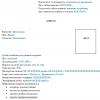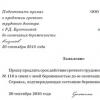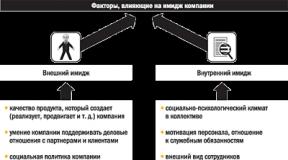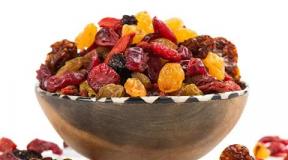Nitrates: a list of drugs, application features. Monocinque Interaction with other medicinal products
The information about the drug Mononitroside presented in the article can be used for informational purposes only. The use of the instructions as a guide to self-medication is unacceptable. Appointment of Mononitroside, dosage and methods of administration is established only by the attending specialist.
General information
The international name is Isosorbіde mononіtrate; 1,4: 3,6-dianhydro-D-glucitol-5-nitrate. Physicochemical properties of a medicinal substance:
- white dragee weighing 20 mg, having a flat-cylindrical shape, with a chamfer;
- white flat-cylindrical dragees weighing 40 mg with chamfer and notch.
In a cell package there are 10 tablets, in a pack there are 3 or 4 such packages.
The drug is dispensed by prescription only.
Pharmacotherapeutic group
Means that affect the circulatory system. Peripheral vasodilators used in cardiology. Organic nitrates. Isosorbide mononitrate. ATC code C01D A14.
Composition and form of release
The product Mononitroside is released in the form of tablets. The content of isosorbide mononitrate in one tablet is 20 or 40 mg. Additional elements that make up the medication are: lactose, calcium stearate, corn starch.
Description of the pharmacological action
Mononitroside is a drug substance with a pronounced antianginal effect of a group of organic nitrates, a peripheral vasodilator that mainly affects the tone of the veins.
Mononitroside is a metabolite of isosorbide dinitrate and nitroglycerin. Due to the formation of nitric oxide, the enzyme guanylate cyclase is activated, which promotes relaxation of the smooth muscles of the blood vessels. Expansion of the veins leads to a decrease in the capacity of the venous bed and the preload on the heart muscle.

The effect of Mononitroside on the arteries helps to reduce their resistance to blood flow, facilitating cardiac activity.
Leads to the normalization of the contractile function of the myocardium in ischemia and heart failure. Mononitroside increases exercise tolerance, increases cardiac output, reduces the frequency and severity of angina attacks in patients with ischemia and heart failure.
Isosorbide mononitrate leads to the expansion of cerebral vessels, and narrowing of the vessels of the internal organs, relaxation of the smooth muscles of the digestive tract, bronchi, urinary and biliary tract. The drug promotes the transformation of hemoglobin into methemoglobin, and the deterioration of oxygen transport. The effect of Mononitroside appears after 20 minutes and lasts for 8 hours.
After ingestion, the substance is completely absorbed. The content of isosorbide mononitrate in the blood reaches a maximum after 2–6 hours. The development of antianginal action occurs after 45–90 minutes, its duration is 8–24 hours. The presence of a therapeutic concentration of Mononitroside is achieved in less than 17 hours.
There is a direct relationship between the level of a medicinal product in the blood and the dose consumed. Mononitroside is metabolized in the kidneys, where 2-glucuronide isosorbide-5-mononitrate and isosorbide are formed. It is excreted for the most part by the kidneys, in the form of metabolic products, a small percentage - with feces. The half-life of the substance ranges from 6.5 to 16 hours.
Indications for use
Mononitroside is prescribed as a measure for the prevention of angina attacks, treatment of chronic congestive heart failure and pulmonary hypertension.
Method of administration and dosage
Mononitroside is taken orally shortly before meals with plenty of water. The recommended dose is 1 tablet (40 mg) 2 times a day. If the pathology has a severe course, then the highest dose can be up to 160 mg per day, divided into 3 doses.
To achieve the desired therapeutic effect, an individual dosage of Mononitroside is recommended according to the patient's condition, drug tolerance and response to it.
To avoid the formation of tolerance to nitrites (any dosage regimen), a 12-hour nitrate-free interval should be provided (often at night).
Monitoring of geodynamics plays an important role in establishing an individual effective dose.

Precautions when using the drug
Mononitroside is not used to relieve angina attacks, solely for its prevention. The drug is prescribed with caution with an increased level of intracranial pressure and a tendency to orthostatic hypotension. Taking the medicine in large doses can lead to the occurrence of methemoglobinemia. Mononitroside influences the results of calorimetric determination of cholesterol concentration.
In order to prevent recurrence of symptoms of angina pectoris, when it is taken for a long time in large doses, it is necessary to gradually cancel it. Failure to comply with the recommended interval becomes the cause of the development of nitrate tolerance, however, the cancellation of isosorbide mononitrate on day 7 restores its effectiveness.
Long-term use of nitrates in high doses is the cause of depletion of tissue reserves of sulfihydryl groups and leads to the formation of tolerance. This phenomenon can be prevented by introducing acetylcysteine, captopril, methionine into the body.

Mononitroside contains lactose, therefore it is contraindicated in patients with its deficiency, glucose-galactose malabsorption, galactosemia.
It is unacceptable to consume alcoholic beverages during the treatment period. The speed of psychomotor reactions may decrease, which must be taken into account when driving or performing hazardous work. Exercise should be performed with caution, since orthostatic hypotensive effects are enhanced.
Mononitroside is not used in children.
Pregnancy and breastfeeding
Mononitroside affects the hemodynamics of the fetus, so you should refuse to use it during pregnancy and lactation. Taking isosorbide mononitroside is likely if the expected benefit to the mother outweighs the acceptable risk to the fetus or child.
And you should also refuse to breastfeed during the period of treatment with this drug. If you need to take it during lactation, then you should exclude the method of natural feeding.

Interaction with other medications
Simultaneous use of Mononitroside with angiotensin-converting enzyme inhibitors, other vasodilators, diuretics, beta-blockers, calcium antagonists, tricyclic antidepressants, monoamine oxidase inhibitors, Viagra, ethanol and ethanol-containing antihypertensives
With sympathomimetics, inhibition of antianginal action is observed, and with antihypertensive drugs, an increase, with dihydroergotamine, an increase in blood levels is noted.
Taking Mononitroside while using hidine contributes to the development of orthostatic collapse.
The combined use of the drug with heparin leads to a decrease in anticoagulant properties. Agents such as Atropine, which have an M-anticholinergic blocking effect, reduce the effectiveness of Mononitroside.
Donors of sulfhydryl groups are used to restore the reduced sensitivity to Mononitroside.

Overdose with Mononitroside
After taking a dose of the drug that exceeds the therapeutic dose, similar symptoms are observed:
- blanching of the skin;
- nausea accompanied by vomiting;
- headache;
- increased sweating;
- arterial hypotension;
- increased intracranial pressure;
- the occurrence of seizures and the development of coma;
- chills;
- dyspnea.
Treatment is performed by gastric lavage. It is necessary to give the patient a supine position and apply oxygen therapy. Plasma substitutes are introduced at low pressure. In especially difficult cases, an infusion of dopamine and sympathomimetics is indicated. To eliminate methemoglobinemia, a 1% solution of methylene blue is prescribed.

Side effects
During treatment with Mononitroside, the development of the following symptoms is noted on the part of the nervous system:
- headaches, the intensity of which decreases with prolonged therapy;
- violation of motor activity (joint pain);
- general weakness;
- blurred vision;
- pathological aggression;
- dizziness.
From the circulatory system side effects Mononitroside is manifested by the following symptoms:
- decrease in pressure;
- cardiopalmus;
- redness of the face. In some cases, when the level of pressure drops sharply, the symptoms of angina pectoris intensify.

On the part of the digestive system, the following side symptoms are observed:
- nausea and vomiting;
- dry mouth.
Side effects of allergic origin are manifested in the form of rashes on the skin, dermatitis, itching.
Shelf life and storage conditions
Mononitroside is stored in its original packaging in a dry place, protected from light and water, at a temperature not exceeding 25 ° C.
It is necessary to keep the drug out of the reach of children. The drug is valid for 24 months. After the expiration of the shelf life, further use of the product is unacceptable.
Analogs of Mononitroside and prices
Among the analogues of the drug, the following can be distinguished:
- Monocard (cost from 672 rubles);
- Plodin (183 r.);
- Monosan (price ranges from 600 rubles);
- Efoks Long (worth 109 rubles);
- Monochinque (from 169 to 187 rubles);
- Monocinque retard (from 297 to 366 rubles).
The listed analogs of Mononitroside contain an active substance similar to the original.
Formula: C6H9NO6, chemical name: 1,4: 3,6-dianhydro-D-glucite 5-nitrate.
Pharmacological group: organotropic agents / cardiovascular agents / nitrates and nitrate-like agents.
Pharmachologic effect: vasodilator, antianginal.
Pharmacological properties
Isosorbide mononitrate increases the concentration of endothelial relaxing factor (nitric oxide) in the endothelium, stimulates the enzyme guanylate cyclase and the production of cyclic guanidine monophosphate, reduces the content of calcium ions in smooth muscle cells, reduces the tone of the vascular wall and causes vasodilation. Isosorbide mononitrate acts mainly on the venous vessels. By expanding the peripheral veins, isosorbide mononitrate reduces venous return to the heart. By expanding the arterioles, it reduces the systolic and mean arterial pressure and total peripheral vascular resistance. As a result of a decrease in post- and preload, the oxygen demand of the heart muscle decreases. Isosorbide mononitrate directly expands the arteries of the heart and improves blood flow to the heart, redistributes blood flow to the ischemic areas of the myocardium, reduces the pressure of wedging in the pulmonary arteries, pressure in the pulmonary circulation, reduces the systolic tension of the walls of the left ventricle and its end diastolic volume. Isosorbide mononitrate increases tolerance to physical activity in patients with ischemic heart disease, reduces the frequency and duration of episodes of painless ischemia (according to daily monitoring of an electrocardiogram). Isosorbide mononitrate improves the quality of life of patients with coronary heart disease by increasing exercise tolerance, reducing angina attacks and the amount of nitroglycerin used. By reducing the preload, it helps to unload the myocardium in heart failure. Isosorbide mononitrate can be used to prevent bleeding from varicose veins of the esophagus in portal hypertension, as it reduces pressure in the portal vein. Isosorbide mononitrate inhibits platelet function. Isosorbide mononitrate promotes a relative redistribution of blood flow towards areas of the lungs with reduced ventilation (poorly ventilated alveolar areas), which can lead to transient hypoxemia (decreased oxygen concentration in arterial blood). Isosorbide mononitrate reduces blood flow to the right atrium, pressure in the pulmonary circulation, contributes to the regression of symptoms in pulmonary edema. Expands the vessels of the dura mater, brain, which may be accompanied by a headache.
Isosorbide mononitrate is well absorbed after oral administration. The bioavailability of the drug is approximately 100%, since it is not metabolized during the "first pass" through the liver. The release of the drug from tablets does not depend on peristalsis, food intake, pH in the lumen of the gastrointestinal tract. The bioavailability of retarded forms is up to 84%. When taken orally, the drug is found in the blood after 3.5 minutes, the maximum concentration is reached after 0.5 - 1 hour. The minimum therapeutic concentration of the drug in the blood is 100 ng / ml. The volume of distribution is 600 liters. There is a direct relationship between the area under the concentration-time curve, the concentration of the drug in the blood and the dose taken. Isosorbide mononitrate hardly binds to blood plasma proteins (less than 4%). The half-life is 4-6 hours. Isosorbide mononitrate is metabolized in the kidneys, with the formation of two pharmacologically inactive metabolites (glucuronides), the half-life of which is 6 to 8 hours. Isosorbide mononitrate is excreted as metabolites (98%) by the kidneys. Renal clearance is 1.8 L / min. In retarded forms, the average time to maintain the therapeutic concentration (not less than 100 ng / ml) is 17 hours, and the maximum concentration in the blood is reached after 5 hours. When conducting tests with physical exertion, it was found that the anti-ischemic and antianginal effect of a simple form when taking 20-40 mg develops after 30-45 minutes and lasts 12 hours, of a retarded form - after 1-1.5 hours and lasts up to a day. Possible development of tolerance to isosorbide mononitrate and cross-resistance to other nitro compounds. After the cancellation of treatment (a break in therapy), sensitivity to it quickly recovers. Violation functional state kidney and liver has no significant effect on the pharmacokinetic parameters of isosorbide mononitrate. The effectiveness of isosorbide mononitrate varies according to individual sensitivity. A single dose of the drug by patients with angina pectoris of functional class 2 - 3 provides an antianginal effect (clinically sufficient) for 6 hours. Taking 50 mg of isosorbide-5-mononitrate once for 1 year leads to a decrease in the number of cases of ST segment depression during exercise testing by 26.6% after 6 hours after the first dose, by 46.7% - after 3 months, by 52.2% - after six months and by 66% - after 1 year of taking the drug, there is also a decrease in the number of angina attacks (by 94%) and the need for nitroglycerin (by 90%).
Indications
Ischemic heart disease (long-term therapy), angina pectoris in the postinfarction period, exertional angina and vasospastic angina pectoris (prevention of attacks), pulmonary hypertension, chronic heart failure (combination therapy).
Dosing and administration of isosorbide mononitrate
Isosorbide mononitrate is taken orally with a small amount of liquid without breaking or chewing. The dose is determined individually. The initial dose is 40-50 mg once a day in the morning after breakfast (for prolonged forms) or 10-20 mg 2 times a day. If necessary, from 3 - 5 days of therapy, the dose can be increased to 80 - 100 mg once a day (for prolonged forms) or up to 20 - 40 mg 2 times a day. When taken 2 times a day, an asymmetric scheme is recommended: the first dose is immediately after waking up, the second - after 7 hours.
With arterial hypotension, isosorbide mononitrate is used only under medical supervision.
Patients with mitral and / or aortic stenosis should be especially closely monitored when prescribing the drug. If it is necessary to use the drug against the background of arterial hypotension, drugs that have a positive inotropic effect should be used together.
During treatment, it is necessary to monitor blood pressure, heart rate.
Do not use the drug to relieve an attack of angina pectoris.
It is necessary to gradually discontinue the drug in order to avoid the development of a withdrawal syndrome.
With prolonged continuous use of high doses, tolerance may develop. With the development of tolerance, it is recommended to cancel the drug for 1 - 2 days or take a break for 3 - 5 days after 3 - 6 weeks of regular use, replacing isosorbide mononitrate with other antianginal drugs during this time.
During the period of using isosorbide mononitrate, it is necessary to exclude the use of alcohol.
Due to the redistribution of blood flow to the hypoventilated areas of the alveoli during treatment, the development of transient hypoxemia is possible.
10 mg of isosorbide mononitrate corresponds to 20 mg of isosorbide dinitrate.
When used together with sapropterin, it is recommended to control blood pressure.
During treatment, it is not recommended to drive vehicles and engage in other potentially hazardous activities that require increased attention and speed of psychomotor reactions.
Contraindications for use
Hypersensitivity (including to other nitro compounds), acute left ventricular failure, acute myocardial infarction with low left ventricular filling pressure, hypovolemia, shock (including cardiogenic shock), severe hypotension (systolic blood pressure less than 100 mm Hg, diastolic blood pressure less 60 mm Hg, central venous pressure less than 4 - 5 mm Hg), acute heart failure, vascular collapse, constrictive pericarditis, hypertrophic obstructive cardiomyopathy, cardiac tamponade, cranial hypertension, intracranial hemorrhage, traumatic brain injury , glaucoma, severe anemia, toxic pulmonary edema, severe mitral and / or severe aortic stenosis, breastfeeding, pregnancy (I trimester), age up to 18 years (safety and efficacy of use have not been established), combined use with phosphodiesterase-5 inhibitors (sildenafil , vardenafil, tadalafil).
Restrictions on use
Acute myocardial infarction, acute coronary syndrome, unstable angina pectoris, aortic and / or mitral stenosis, mitral valve prolapse, tendency to orthostatic disorders of vascular regulation, old age, thyrotoxicosis, liver failure, severe renal failure, hypothyroidism, malnutrition.
Application during pregnancy and lactation
The use of isosorbide mononitrate is contraindicated in the first trimester of pregnancy, in the second and third trimesters of pregnancy, use is possible when prescribed by a doctor, when the intended benefit to the mother is higher than the possible negative effect on the fetus. During therapy with isosorbide mononitrate, breastfeeding must be discontinued.
Side effects of isosorbide mononitrate
Nervous system and senses: weakness, "nitrate" headache, agitation, dizziness, drowsiness, stiffness, blurred vision, decreased ability for quick mental and motor reactions, lethargy, cerebral ischemia.
Cardiovascular system and blood: redness of the facial skin, hypotension (including orthostatic), tachycardia, increased symptoms of angina pectoris (paradoxical effect), syncope, fever, collapse, transient hypoxemia, severe paradoxical bradycardia, methemoglobinemia.
Digestive system: nausea, dry mouth, burning tongue, vomiting.
Allergic reactions: itching, burning, exfoliative dermatitis, angioedema, urticaria, skin rash, Stevens-Johnson syndrome.
Others: pallor, sweating, transient hypoxemia, increased levels of vanillin-succinic acid and catecholamines in urine, development of tolerance.
Interaction of isosorbide mononitrate with other substances
Isosorbide mononitrate mutually enhances the antihypertensive effect of beta-blockers, vasodilators, calcium antagonists, antipsychotics, narcotic analgesics, tricyclic antidepressants, diuretics, alcohol, procainamide, quinidine, inhibitors of phosphodiesterase phylamide, silvardinaphyladenzaphylamide inhibitors, type 5, including vardinaphyladenzaphil
Barbiturates, accelerating the biotransformation of isosorbide mononitrate, reduce its concentration in the blood.
When isosorbide mononitrate is used together with non-steroidal anti-inflammatory drugs, their effect may be weakened.
Isosorbide mononitrate weakens the therapeutic effect of norepinephrine, norepinephrine.
The combined use of isosorbide mononitrate and levosimendan in healthy volunteers increased orthostatic hypotension.
Isosorbide mononitrate may reduce the antianginal effect of nitroglycerin.
Under the action of alpha-blockers, beta-adrenergic agonists, it is possible to reduce the antianginal effect of isosorbide mononitrate.
Isosorbide mononitrate increases the plasma concentration of dihydroergotamine.
Sumatriptan can cause coronary spasm in patients with Prinzmetal's angina pectoris or coronary artery disease who receive isosorbide mononitrate, therefore, the combined use of these drugs is not recommended.
When isosorbide mononitrate is used together with m-anticholinergics (atropine and others), the risk of developing an increase in intraocular pressure increases.
An increase in the antianginal effect is possible with the combined use of isosorbide mononitrate with amiodarone, propranolol, blockers of "slow" calcium channels (nifedipine, verapamil and others).
Coating and astringent preparations, adsorbents reduce the absorption of isosorbide mononitrate in the gastrointestinal tract.
With the combined use of all vasodilating drugs, the mechanism of action of which is associated with nitric oxide (including classical donors of nitric oxide (isosorbide dinitrate, nitroglycerin, isosorbide mononitrate, molsidomine, sodium nitroprusside)), with sapropterin (coenzyme of nitric oxide synthetase), the risk of developing arterial hypotension.
Overdose
In case of an overdose of isosorbide mononitrate, a feeling of head pressure, tachycardia, severe hypotension, orthostatic hypotension, throbbing headache, cold skin covered with sticky sweat or hyperemic skin, severe sweating, palpitations, weakness, conduction disturbance (blockade), bradycardia, bradycardia shortness of breath, dyspnea, tachypnea, bloody diarrhea, dizziness, nausea, diarrhea, vomiting, confusion, coma, syncope, paralysis, fever, visual impairment, cyanosis, methemoglobinemia, increased intracranial pressure with cerebral symptoms. It is necessary: to rinse the stomach, give a horizontal position and raise the legs, intravenous drip administration of infusion solutions, control of the content of methemoglobin in the blood, when it rises - administration of 1 g of ascorbic acid inside, intravenous administration of methylene blue (methylthioninium chloride) up to 50 ml of 1% solution, toluidine blue - 2 - 4 mg / kg body weight intravenously quickly, if necessary - repeatedly at a dose of 2 mg / kg after 1 hour, hemodialysis, oxygen therapy, exchange blood transfusion, symptomatic treatment.
Excipients: sucrose, corn starch, ethyl cellulose, stearic acid, talc, dye red 4R (E124), quinoline yellow (E104), titanium dioxide, gelatin.
15 pcs. - blisters (2) - cardboard packs.
Clinical and pharmacological group
Peripheral vasodilator. Antianginal drugpharmachologic effect
Peripheral vasodilator with a predominant effect on the venous vessels. Antianginal drug.
Reduces preload (due to the expansion of peripheral veins) and afterload (due to a decrease in TPR), reduces myocardial oxygen demand. Expands the coronary arteries and improves coronary blood flow, promotes its redistribution to ischemic areas, reduces the end-diastolic volume of the left ventricle and reduces the systolic tension of its walls. Increases exercise tolerance in patients with ischemic heart disease, reduces pressure in the pulmonary circulation.
At the molecular level, it acts through the formation of nitric oxide (NO) and cyclic guanosine monophosphate (cGMP), reducing the concentration of calcium in smooth muscle cells.
A special dosage form of Monocinque retard with a sustained release of the active substance provides a therapeutic concentration of the drug in the blood within 24 hours after taking a single daily dose.
Pharmacokinetics
Absorption and metabolism
After oral administration, isosorbide-5-mononitrate is rapidly and completely absorbed from the gastrointestinal tract. The oral bioavailability of the drug ranges from 90 to 100%. C max in blood plasma is reached within 1-1.5 hours after administration.
Does not undergo the "first pass" effect through the liver.
Withdrawal
Isosorbide-5-mononitrate is excreted by the kidneys exclusively as metabolites. Approximately 2% is displayed unchanged.
T 1/2 is approximately 5 hours, which is approximately 8 times higher than that of isosorbide dinitrate.
Indications for the use of the drug
- prevention and long-term therapy of angina pectoris III-IV functional classes;
- rehabilitation treatment after myocardial infarction;
- treatment of chronic heart failure (as part of combination therapy).
Dosage regimen
Monocinque retard is prescribed 50 mg (1 capsule) 1 time / day in the morning after meals, without chewing and drinking a small amount of liquid.
The dose should be adjusted depending on the patient's condition.
Side effect
However, as with the use of other nitrates, it is possible:
From the side of cardio-vascular system: at the beginning of treatment - headache, which usually decreases after a few days with continued therapy; after the first dose or after increasing the dose - arterial (including orthostatic) hypotension, accompanied by tachycardia, dizziness, weakness.
From the digestive system: very rarely - nausea, vomiting.
Dermatological reactions: very rarely - facial redness and skin allergic reactions.
Contraindications to the use of the drug
- acute circulatory disorders (shock, vascular collapse);
- hemorrhagic stroke;
- acute stage of myocardial infarction;
- concomitant use of phosphodiesterase inhibitors (sildenafil);
- severe arterial hypotension (systolic blood pressure<90 мм рт.ст., диастолическое АД<60 мм рт.ст.);
- conditions after traumatic brain injury;
- angle-closure glaucoma;
- deficiency of glucose-6-phosphate dehydrogenase;
- age up to 18 years;
- hypersensitivity to organic nitrates.
Use of the drug during pregnancy and lactation
During pregnancy, the drug can be prescribed only for strict indications, when the expected therapeutic effect for the mother outweighs the potential risk to the fetus.
If there is a need to use the drug during lactation, then breastfeeding should be discontinued.
special instructions
The drug is not used to relieve angina attacks.
In case of arterial hypertension, the drug is used only under the supervision of a physician.
The drug is prescribed both as monotherapy and in combination with beta-blockers, calcium channel blockers, ACE inhibitors, cardiac glycosides or diuretics.
Influence on the ability to drive vehicles and use mechanisms
When taking the drug, the ability to concentrate and the speed of psychomotor reactions may decrease, and therefore it is not recommended to drive vehicles and engage in other potentially hazardous activities.
Overdose
No cases of overdose have been reported.
Treatment: carrying out generally accepted measures (artificial vomiting, gastric lavage, hemodynamic control).
Drug interactions
With the simultaneous administration of Monocinque retard with other vasodilators, antihypertensive drugs, beta-blockers, calcium channel blockers, antipsychotics, tricyclic antidepressants, sildenafil, ethanol, it is possible to potentiate the hypotensive effect of Monocinque retard.
Conditions of dispensing from pharmacies
The drug is available with a prescription.
Storage conditions and periods
The drug should be stored in a dark place, out of the reach of children, at a temperature not exceeding 25 ° C. Shelf life is 3 years.
"Isosorbide mononitrate
1. International non-proprietary name
Isosorbide mononitrate (I-5-M).
2. Main synonyms
Isosorbide mononitrate, Isosorbide mononitrate, Cardisorb, Monizid, Monizol, Mono Mac, Mono Mac 50 D, Mono Mac depot, Monolong, Mononit, Mononitrate retard, Monosan, Monocinque, Monocinque retard, Olikard 40 retard, Olikard 60 retard, Pectrol, Ellikard Efoks 20, Efoks long.
3. Pharmacotherapeutic group
Drugs affecting the cardiovascular system (antianginal drugs).
4. The main pharmacotherapeutic action and effects
Antianginal action, reduction of preload on the heart.
5. Summary of evidence of effectiveness
Level persuasive evidence B. The antianginal effect of I-5-M has been confirmed in controlled studies, the advantages over isosorbide dinitrate remain unclear.
6. Brief results of pharmacoeconomic studies
Estimated price for 1 tablet (20 mg) from 0.72 to 2.06 rubles.
7. Pharmacodynamics, pharmacokinetics, bioequivalence for analogues
Nitrates are able to release nitric oxide from their molecule, donors of nitric oxide, which is a natural endothelial relaxing factor - a mediator of direct activation of guanylate cyclase. An increase in the concentration of cGMP leads to relaxation of smooth muscle fibers, mainly venules and veins. Has antianginal and antispasmodic effect, relaxes the smooth muscles of the vascular walls, bronchi, gastrointestinal tract, biliary tract, ureters. When administered intravenously, it causes a rapid decrease in the preload on the heart due to the expansion of the peripheral veins. Reduces blood flow to the right atrium, helps to reduce pressure in the pulmonary circulation and regression of symptoms in pulmonary edema, reduces afterload, myocardial oxygen demand (by reducing preload, afterload and tension of the ventricular walls due to a decrease in heart volume). Promotes the redistribution of coronary blood flow in the area with reduced blood circulation. It has a central inhibitory effect on the sympathetic vascular tone, inhibiting the vascular component of the formation of pain syndrome. It causes an expansion of the meningeal vessels, which explains the headache when it is used. In the implementation of the hemodynamic and antianginal effects of organic nitrates, the most important importance is attached to their vasodilating effect: a) on the capacitive veins, which leads to a decrease in myocardial oxygen demand, preload and ventricular volume, as well as an improvement in blood flow in the subendocardial part of the myocardium (most sensitive to ischemia) ; b) on the systemic vascular arteries, which, in combination with a decrease in the volume of the left ventricle, reduces the afterload and leads to a decrease in myocardial oxygen demand; c) on the epicardial part of the coronary arteries, including their stenotic segments, which improves the main coronary blood flow; d) on the coronary collateral vessels, thereby causing an improvement in the blood supply to the ischemic areas of the myocardium. Isosorbide mononitrate (I-5-M) has a dilating effect on peripheral arteries and mainly on veins, reducing pre- and afterload and thereby reducing the end-diastolic pressure in the left ventricle and the pressure of pulmonary capillary wedging; reduces systemic vascular resistance, which leads to a decrease in systolic and mean arterial pressure. The antianginal effect of isosorbide mononitrate (I-5-M), according to the Department of Preventive Pharmacology, occurs within 30-45 minutes after ingestion (after taking conventional isosorbide mononitrate tablets - after 15-45 minutes). The maximum in severity anti-ischemic effect develops on average after 45-60 minutes and is equal to 100%. The antianginal effect after taking 60 mg and 120 mg of prolonged-release isosorbide mononitrate (I-5-M) is maximally pronounced only after 4 hours, and after 20 and 24 hours, despite the high concentration of isosorbide mononitrate (I-5-M) in the blood plasma after taking 100 mg, the effect was absent, which may be due to the development of tachyphylaxis (early tolerance) to the drug. After taking a single dose of 80 mg in capsules, the duration of the antianginal effect was 10-14 hours, and the maximum severity of the effect was 100%. When taken orally, isosorbide mononitrate (I-5-M) has a high bioavailability - about 100%, due to the absence of the phenomenon of the first passage through the liver (it is not metabolized in the liver). There was a high linear dependence of pharmacokinetic parameters on the dose when taken orally from 10 to 60 mg of isosorbide mononitrate (I-5-M). Compared with isosorbide mononitrate tablets, its half-life is longer: 4.1-4.9 hours.In contrast to isosorbide mononitrate, there is a connection between the plasma concentration of isosorbide mononitrate and its effect with a single dose of the drug and the weakening of this connection with prolonged (two-month ) regular intake, which may indicate the possibility of developing tolerance to isosorbide mononitrate. The lower limit of the therapeutic concentration of isosorbide mononitrate (I-5-M) in blood plasma is approximately 100 ng / ml. Isosorbide mononitrate (I-5-M) in plasma is determined already 3.5 minutes after taking the tablet and reaches a maximum level after 0.5-1 hours. Absorption of isosorbide mononitrate (I-5-M) from the gastrointestinal tract does not depend from eating. 30 minutes after taking the prolonged form of the tablet (imdura 60 mg), the concentration of isosorbide mononitrate (I-5-M) in plasma reaches 500 ng / ml. The therapeutic concentration, although at a lower level, is maintained after 12 and 24 hours.After taking one capsule of Elantan Retard (Efoks Long) 50 mg, the concentration of isosorbide mononitrate (I-5-M) in plasma is determined at about 180 ng / ml after 1 hour and then reaches a maximum value of about 300 ng / ml after 7 hours; a low concentration of isosorbide mononitrate (I-5-M) in plasma (about 40 ng / ml) persists after 24 hours.
8. Indications
Conventional tablets of isosorbide mononitrate (I-5-M) are used to prevent angina attacks, retard tablets to prevent angina attacks in patients with frequent attacks and significantly reduced exercise tolerance.
9. Contraindications
Myocardial infarction with low filling pressure of the left ventricle, acute left ventricular failure, acute disorders of cerebral circulation, allergic reactions to nitrates, severe hypotension.
10. Performance criteria
The criterion of effectiveness is the prevention of anginal pain.
11. Principles of selection, dose change and cancellation
Tablets of 0.02 g, 0.04 g; 1% solution in ampoules of 1 ml (10 mg). You can start with a tolerance test dose of 10 mg 1 time / day. Therapeutic dose - 20 mg 2 times / day with an interval of 7 hours or as needed before physical activity. The dose can be increased to 20 mg 3 times / day, then up to 40 mg 2-3 and even 4 times / day. However, such frequent use and large doses of the drug can quickly cause the development of tolerance to it. Sustained-release drugs: efoks long 50 mg, olikard retard 40 and 60 mg. 1 tablet (capsule) once a day, if necessary - up to 2 tablets (capsules), and if isosorbide mononitrate (I-5-M) is well tolerated, they can be taken simultaneously in the morning. If a headache occurs, a single dose is reduced to half the capsule (tablet). However, do not chew or try to dissolve the drug in the mouth, it must be swallowed with water.
12. Overdose
In case of an overdose, there is excessive vasodilation, deposition of venous blood, a decrease in cardiac output and arterial hypotension, clinical manifestations such as signs of increased intracranial pressure (pulsating headache, confusion and moderate nervous agitation) may occur; dizziness, palpitations, visual disturbances; nausea, vomiting, sometimes intestinal colic and bloody diarrhea; fainting (in orthostasis); lack of air and shortness of breath (due to a decrease in the activity of respiratory movements); profuse sweating (sticky sweat) with cooling of the skin or flushing of the skin; heart block and bradycardia; paralysis, coma, seizures and even death. In case of clinical signs of an overdose, it is necessary to artificially induce vomiting, to give activated carbon inside; in case of hypotension, the patient should be laid on his back with raised legs; blood-substituting fluids are injected intravenously.
13. Warnings and Information for Medical Personnel
Long-term and frequent use of especially large doses of drugs can lead to the development of tolerance to isosorbide mononitrate (I-5-M).
14. Peculiarities of use and restrictions in old age, with insufficiency of liver, kidney function, etc.
Due to possible changes in pharmacokinetic parameters, there is a certain risk of using isosorbide mononitrate (I-5-M) in the elderly, in patients with renal and hepatic insufficiency, including after portocaval bypass surgery. I-5-M is contraindicated in the first 3 months of pregnancy. When breastfeeding, you must stop taking the drug.
15. Side effects and complications
They are noted, apparently, less often than after taking isosorbide dinitrate tablets. Headache (in 9% of cases), dizziness (in 1% of cases), more often during a headache. The rest of the side effects are rare (less than 1% of cases): facial flushing, gastrointestinal disturbances, a decrease in systolic blood pressure by 10% from the baseline, palpitations, tachycardia (an increase in the number of heart contractions by 10-14%). High single doses (40-50 mg) can be poorly tolerated by patients due to possible orthostatic reactions, although there is a risk of their occurrence even when taking small doses of the drug. Arterial hypotension caused by isosorbide mononitrate (I-5-M) may be accompanied by paradoxical bradycardia and the onset of an attack of angina pectoris. Like other nitrates, isosorbide mononitrate (I-5-M) can cause paradoxical reactions in patients with hypertrophic cardiomyopathy - an attack of angina pectoris, severe myocardial ischemia.
16. Interaction with other medicinal products
Avoid the appointment of isosorbide mononitrate (I-5-M) together with antihypertensive, vasodilator drugs and tricyclic antidepressants due to the risk of severe arterial hypotension.
17. The use of drugs in complex medicines
Not applicable.
18. Warnings and Information for the Patient
The action of the drug does not occur quickly enough to be used to relieve an attack of angina pectoris. Reception of isosorbide mononitrate (I-5-M) is not recommended for transport drivers due to possible impaired concentration.
19. Additional requirements for informed consent of the patient
The patient must consent to the treatment of possible complications.
20. Forms of release, dosage
Sustained-release capsules 10, 20, 40, 60 mg; retard tablets 50, 100 mg; sustained-release tablets 40, 60 mg.
Firms: Searle, produced by Ethypharm, France; ICN Hangary, Hungary; Balkanpharma - Dupnitza AD, Bulgaria; Zorka Pharma, Yugoslavia; Heinrich Mack Nachf. GmbH & Co. KG, Germany; CTS Chemical Industries Ltd, Israel; Sanofi-Biocom Ltd, Poland; Euderma SPA, Italy; Pro. Med. Cs Praha AS, Czech Republic; Instituto Lusofarmaco, Italy; Solvay Pharmaceuticals GmbH, Germany; KRKA d.d., Slovenia; Schwarz Pharma AG, Germany; Schwarz Pharma Poland GmbH, Poland.
21. Storage features
List B.
| " |



















